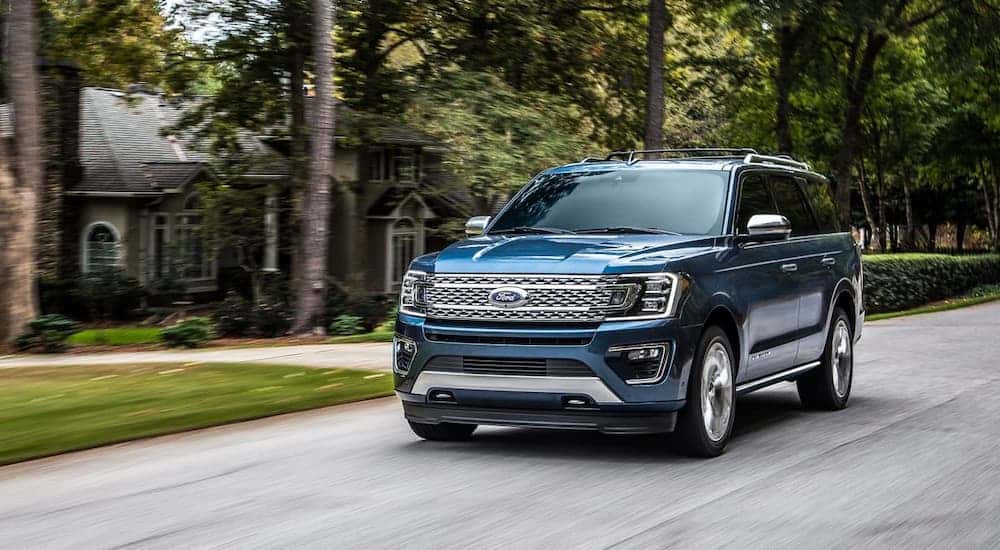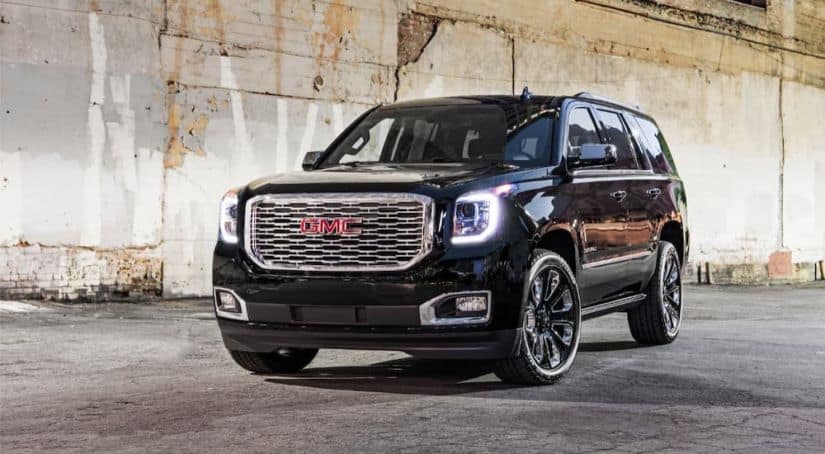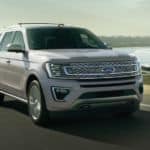Shopping for an SUV isn’t easy these days. With so many options out on the market right now, making a decision can be very difficult. The SUV, or sports utility vehicle, is a popular body styling and is being reimagined across manufacturer brands, growing this vast market even more. That said, amongst the growing crowd of potential models, there are a handful of standouts. And today, we are going to look at two of the most popular choices in a comparison: 2020 GMC Yukon and the 2020 Ford Expedition.
These are two large SUVs that, on size alone, break away from the competition. And apart from that, they each offer a plethora of features and modern comforts that elevate them to the front of the pack. Although, between each of these two heavyweight SUVs, which is superior? This is a fair question to ask, especially since at face value, both models bring quite a lot to the table. But as we delve into the nitty-gritty details that separate these two models, it’ll become clear which is the real standout.
The Power of a Good First Impression
One of the first things to notice is that the 2020 GMC Yukon is cheaper than its Ford-made competitor. The starting MSRP for the Ford Expedition is a weighty $52,810; meanwhile, the GMC Yukon has an entry price of $50,600. While neither of these vehicles fit into the economy level, that $2,000 or so worth of difference really matters, especially when you start getting into higher trims, features, and add-ons.
Speaking of trims, the Ford Expedition is available in the XLT, Limited, King Ranch, and Platinum, with additional MAX, trims. This is a solid spread, although we will be digging deeper to see whether each trim upgrade is worth it. Meanwhile, the GMC Yukon offers three simple and effective trims, which include the SLE, SLT, and Denali, with additional XL configuration. Sometimes, simple is better, especially when adequately equipped, but like the Ford Expedition, first impressions only carry us so far in determining which model is superior.

Muscle Matters
When purchasing a large SUV, a major factor worth considering is the degree of engine power tucked beneath the hood. While you can garner greater fuel economy from a smaller engine, you’ll need something rather robust to power a car that offers three-rows of seating.
In terms of this competition, the Ford Expedition starts with a twin-turbocharged 3.5-liter V6 and a 10-speed automatic transmission. This entry-level powertrain is well fleshed out, providing drivers with a maximum of 375 hp and 470 lb-ft worth of torque. And while this is a solid option, the platinum trim sees some improved performance with 400 hp and 480 lb-ft of torque.
Drivetrains in the Ford Expedition are amply supplied, with some models getting a 4WD, which provides superior traction on terrains like mud or sand. When built the right way, the Ford Expedition can haul up to 9,300 pounds of rear-end cargo, which is quite remarkable all things considered. Unfortunately, the 3.5-liter V6 engine is the only engine that you’ll find available in the Ford Expedition. Sure, higher-end models squeeze more oomph out of this V6, we’re kind of disappointed that there wasn’t an eight-cylinder engine available for this hefty SUV.
When you pivot to the performance of the GMC Yukon, right away, you’ll notice that there is more than one option, already an improvement over the Expedition. The GMC Yukon comes standard with a 5.3-liter V8 engine that makes 355 hp and 383 lb-ft of torque. A rear-wheel drivetrain is standard in this entry-model, as is a 6-speed automatic transmission. Although, if you want something that can provide more substantial torque, we recommend that you step up to the 6.2-liter V8, which is responsible for 420 hp and 460 lb-ft worth of torque. This powertrain, when equipped with the rear-wheel drivetrain, can haul up to 8,500 pounds. While this towing capacity is somewhat lower than that found in the Ford Expedition, it is a small sacrifice to make for a bigger engine.
So, each Ford Expedition and the GMC Yukon have their pros and cons when it comes to performance. But the engine roaring beneath the hood isn’t the only method by which we compare large SUVs.
Venturing Inside the Cabin

While the power behind three-row SUVs matters, interior spacing and amenities can go a long way in making for a remarkable driving experience. Starting again with the Ford Expedition, you’ll get a cloth-upholstered interior that offers three-rows of seating, and up to 104.6 cu.ft. of cargo space. However, if you upgrade to the Max edition, you’ll find that cargo spacing measurement balloon to 121.5 cu.ft. Meanwhile, the GMC Yukon offers cloth upholstery, with options for leather in higher trims. Interior cargo space is nearly comparable to the Ford Expedition, offering 95 cu.ft., while the Yukon XL amps things up to 121 cu.ft. in total.
But what about the technology supporting the interior experience of these two large SUVs? Well, the Ford Expedition starts rather strong with a power driver seat, and a power-folding third-row seat. There is also an AM/FM/XM audio system and a standard-issue 8-inch infotainment touchscreen with Apple CarPlay and Android Auto compatibility. If you want leather seats or greater interior tech, it’s going to require more substantial upgrades. That said, a near top-tier Platinum model can be equipped with a panoramic sunroof, 22-inch wheels, LED headlights, and a booming B&O audio system.
The GMC Yukon manages to keep up with its Ford brand competitor. When you step into the GMC Yukon, you’ll get an Apple CarPlay and Android Auto compatible infotainment system that measures in at 8-inches diagonally. Coupled with this infotainment system is a 4G LTE Wi-Fi hotspot, something that is nowhere to be found on base models of the Ford Expedition. A Bose designed audio system is also standard fare in the GMC Yukon, a feature typically exclusive for higher-end models. And on the subject of high-end models, the GMC Yukon adds in some significant upgrades such as leather upholstery, heated front, and second-row seats, active noise cancellation, and a smooth-riding magnetic suspension that’s assisted by a set of 20-inch wheels.
Which is the Best SUV?
If you’re on the hunt for a large SUV, chances are you expect a whole lot even at base trims, which makes sense. These cars can have a hefty price tag, and it’s smart to try and get the most bang for your buck. Between the 2020 Ford Expedition and the 2020 GMC Yukon, finding a decided victor can be somewhat tricky as in many ways, these two models are quite evenly matched. Although, when you start parsing the differences between powertrains, standard tech features, and overall value, the GMC Yukon appears to be the better choice.
The 2020 GMC Yukon is a large SUV that doesn’t hold back any punches. And by offering two powertrains, a 4G LTE Wi-Fi hotspot, as well as a lower price tag, it is the superior choice between these two models. That said, you shouldn’t just take our word for it, visit your local Ford and GMC dealership to get an up-close-and-personal look at both of these SUVs. But, after you do, you will likely pick the Yukon.



